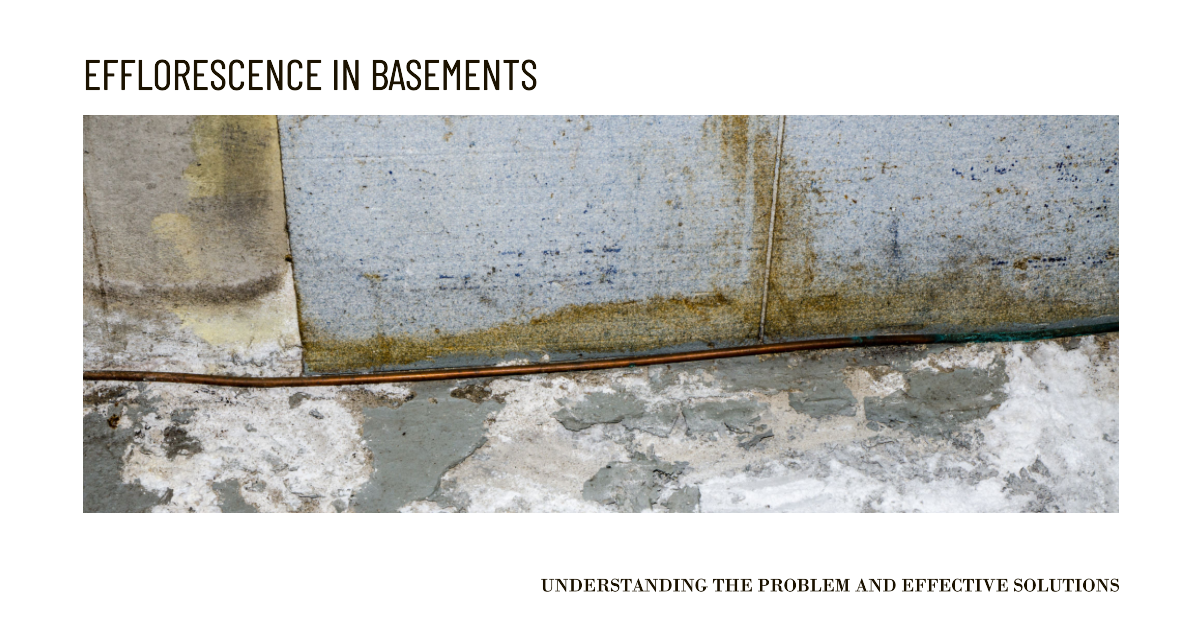I am a well-rounded expert with proficiency in several fields. My experience spans from being a dedicated chef and homemaker. As a passionate homesteader, I’ve honed my skills in sustainable living and animal care, ensuring a holistic approach to everything I undertake. Email me or Txt: (# removed due to spam, please email)
As a homeowner or potential homebuyer, it’s essential to understand various challenges that can impact the health and safety of your home. One such issue that you may encounter is efflorescence in basements.
In this article, we’ll discuss what efflorescence is, its causes, whether it’s a problem, and what you can do to address it.

What Causes Efflorescence in Basements
Efflorescence occurs when moisture evaporates from porous materials like concrete, brick, or stone, leaving behind mineral deposits on the surface.
In basements, common sources of moisture include groundwater, condensation, or leaks from plumbing or the home’s foundation.
Efflorescence can also occur when water vapor enters the basement from the outside, and then migrates to the surface of the basement walls and floors.
When the water evaporates, it leaves behind salt deposits, which can create a white, powdery residue on the surface.
Additionally, efflorescence can be exacerbated by high humidity levels in the basement, which increases the amount of moisture available to evaporate and leave mineral deposits.

Is Efflorescence in Basement a Problem?
While efflorescence is primarily an aesthetic issue, it can indicate more severe problems related to moisture in your basement.
Excessive moisture can lead to structural damage, such as the deterioration of building materials or the growth of mold and mildew, which can impact your home’s air quality and pose health risks.
Efflorescence itself is not harmful, but it can be a sign of underlying moisture issues that could cause problems in the future.
Therefore, it’s important to identify and address the source of the moisture to prevent further damage.

Should I Buy a House with Efflorescence in the Basement?
When considering purchasing a house with efflorescence in the basement, it’s crucial to assess the severity of the issue and the potential costs of remediation.
Having a professional inspection conducted before buying the property can provide valuable insight into the root causes of the efflorescence and help you make an informed decision.
You should also consider whether the efflorescence is indicative of more severe moisture problems, which could lead to more significant damage down the line.
If the cause of the efflorescence is addressed and remediated, the efflorescence itself can often be removed with appropriate cleaning solutions.
Ultimately, it’s important to weigh the potential costs and risks against the benefits of purchasing the property.

How to Fix Efflorescence in Basement Walls and Floors
Addressing efflorescence in your basement involves a combination of removal and prevention techniques:
- Remove the efflorescence: Using a stiff brush, scrub the affected surfaces to remove the mineral deposits. For more stubborn cases, consider using a mild masonry cleaner or consulting with a professional.
- Identify and address the moisture source: Determine the cause of the moisture in your basement and take appropriate measures to fix any leaks, improve drainage, or address condensation issues.
- Seal the surfaces: Apply a high-quality masonry sealer to the basement walls and floor to help prevent future efflorescence and protect your surfaces from moisture damage.
- Monitor and maintain: Regularly inspect your basement for signs of new efflorescence or moisture issues, and address them promptly to prevent further damage.
Here are some additional tips for fixing efflorescence in your basement:
- Improve ventilation: Install proper ventilation systems, such as exhaust fans, to increase air circulation and reduce humidity levels in your basement.
- Waterproof your basement: Consider applying waterproof coatings to the walls and floor of your basement to help prevent water intrusion and minimize the risk of efflorescence.
- Use dehumidifiers: If high humidity levels persist, consider using a dehumidifier to remove excess moisture from the air.
- Fix foundation issues: If efflorescence is due to foundation issues, such as cracks or damage, consult with a professional foundation expert to assess the damage and recommend the best course of action.
Overall, the key to fixing efflorescence in your basement is to identify and address the underlying moisture issues that are causing it.
By taking steps to remove existing efflorescence, prevent future occurrences, and maintain a dry and well-ventilated basement, you can protect your home from the structural damage and health risks associated with excess moisture.

Conclusion
Understanding efflorescence and its implications is crucial for maintaining a healthy and safe home.
By addressing efflorescence in your basement and taking preventative measures, you can protect your home from potential damage related to moisture issues.
If you’re considering buying a house with efflorescence in the basement, consult with professionals and make informed decisions to ensure your home remains a sound investment.




